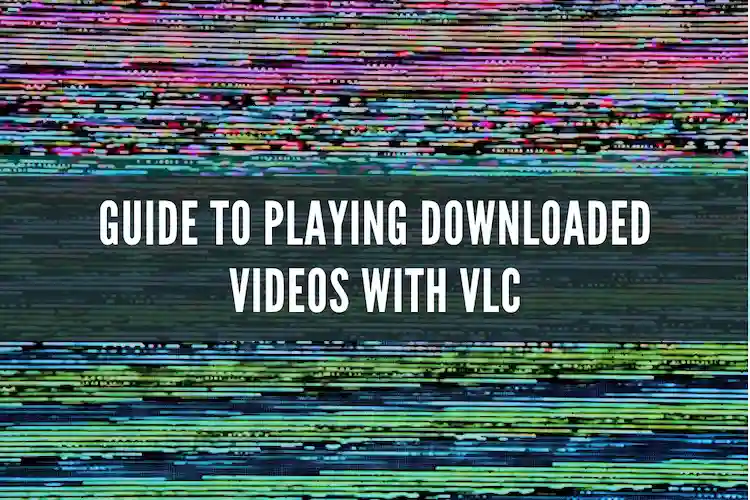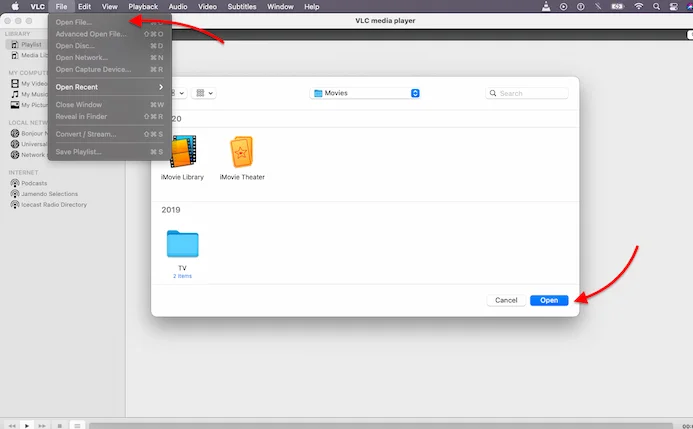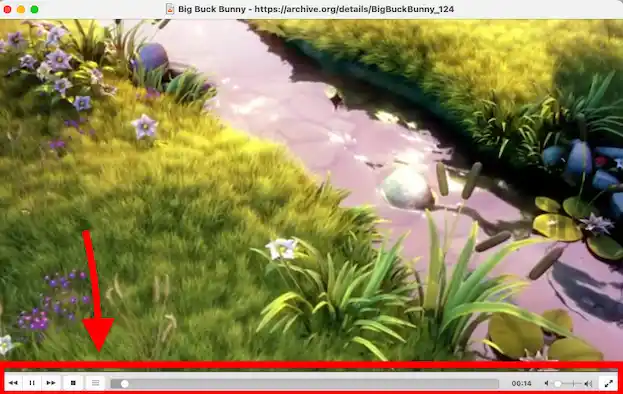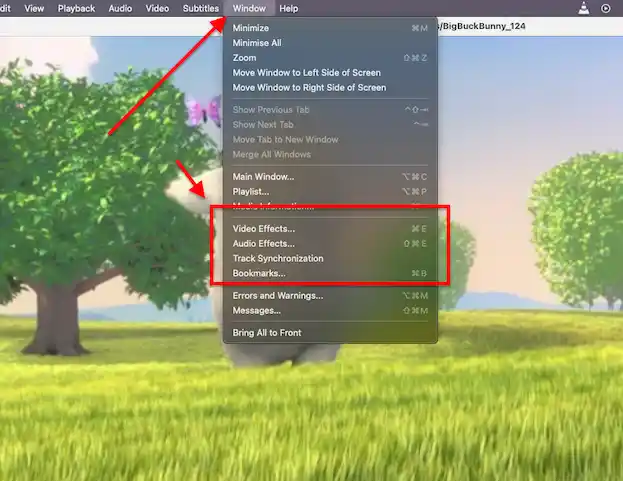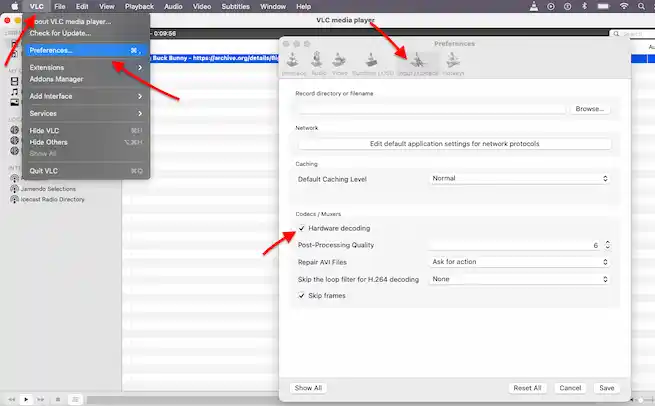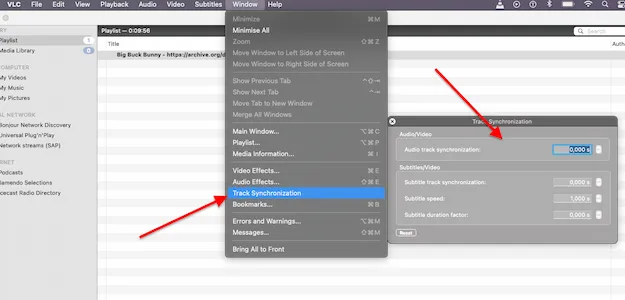VLC Media Player, developed by the VideoLAN project, is a highly acclaimed open-source media player used by millions of users worldwide. What sets VLC apart is its exceptional capability to handle an extensive range of audio and video file formats. Such versatility has made many people fall in love with this tool, as it really fulfills all your media playback needs. From popular video formats like MP4, AVI, and MKV to less common ones, VLC’s robustness ensures that you can enjoy your media collection without worrying about compatibility issues.
So, how to play downloaded videos with VLC?
As technology advances and the internet facilitates easy access to a plethora of multimedia content, downloading videos has become a common practice. However, not all media players can handle the variety of file formats available on the web. That’s where VLC comes in handy.
This guide aims to help you in harnessing the full potential of VLC Media Player to effortlessly play your downloaded videos, regardless of the format. Throughout this step-by-step guide, we’ll walk you through the process of using VLC to play your downloaded videos seamlessly.
1. Step-by-Step Guide to Play Downloaded Videos with VLC
VLC Media Player stands out as a reliable and feature-rich software that can effortlessly handle a wide array of downloaded video and audio formats. In this comprehensive step-by-step section, we will walk you through each stage of using VLC to play your downloaded videos smoothly.
A. Download and Install VLC Media Player
Before diving into the world of VLC, you’ll need to download and install the software on your computer. (if you already have VLC on your computer, skip this section). Fortunately, VLC is available for various operating systems, so we’ll guide you through the process based on your specific OS. Here’s how you can get started:
- Visit the official VLC website at videolan.org.
- Navigate to the “Download” section, and choose the appropriate version for your operating system (Windows, macOS, Linux, etc.).
- Click on the download link and save the installer to your computer.
- Once the download is complete, run the installer and follow the on-screen instructions to install VLC.
B. Organize Downloaded Video Files
To streamline your media playback experience with VLC, it’s essential to organize your downloaded video files systematically. Follow these steps to keep your media library well-structured:
- Create a dedicated folder on your computer for your downloaded videos. A great way to keep your download process optimized is using the download manager JDownloader.
- Organize the videos into subfolders based on categories or genres, if desired.
- Rename the video files if needed for easier identification.
C. Open Videos in VLC Media Player
With VLC installed and your video library organized, it’s time to open and play your downloaded videos in VLC. There are two ways to do this:
- Launch VLC Media Player from your computer’s applications or programs menu.
- Go to the “Media” menu at the top and choose “Open File.” Locate the downloaded video in your folder and click “Open.”
- Alternatively, you can also drag and drop the video file directly into the VLC window.
D. Navigate and Use Basic Playback Controls
Once your video is playing in VLC, you can navigate and utilize the basic playback controls to enhance your viewing experience. Here’s what you need to know:
- Play/Pause: Click on the play button to start playback, and click again to pause.
- Seek: Drag the progress bar to jump to a specific point in the video.
- Volume: Adjust the volume using the volume slider.
- Fullscreen: Click the fullscreen button to switch to fullscreen mode for an immersive experience.
E. Adjust Video and Audio Settings
VLC offers a variety of options to fine-tune your video and audio settings to suit your preferences. Here’s how you can customize your playback:
- Video Settings: In Windows, access the “Tools” menu and choose “Effects and Filters.” Here, you can adjust the aspect ratio, zoom, and rotation of the video.
- Audio Settings: In Windows, navigate to the “Audio” menu to access the equalizer and select different audio tracks if your video has multiple audio streams.
For macOS, you can click on Window > Video Effects or Audio Effects, to access the same settings.
F. Add Subtitles and Captions
Watching videos with subtitles can significantly improve the viewing experience, especially for non-native speakers or when the video lacks clear audio (this is pretty common in downloaded video files).
Here’s how to add subtitles to your downloaded videos in VLC:
- Ensure the subtitle file has the same name as the video file and is in the same folder.
- Open the video in VLC, and the subtitle should be automatically detected and displayed. If not, go to the “Subtitle” menu and choose “Add Subtitle File” to manually select the subtitle.
G. Explore Advanced Features for Downloaded Videos
VLC offers a plethora of advanced features that can enhance your video playback. Here are some notable features to explore:
- Video Filters: Under the “Tools” menu, you’ll find “Video Effects,” where you can apply various filters like sharpening, color manipulation, and more.
- Video Effects: In the same “Video Effects” section, you can adjust image properties, such as contrast and brightness.
- Audio Synchronization: If you encounter any audio sync issues, go to the “Tools” menu, select “Track Synchronization,” and make the necessary adjustments.
With this comprehensive step-by-step guide, you are now equipped to make the most out of VLC Media Player and enjoy seamless playback of your downloaded videos. If you want to take your VLC skills to another level, learn the following VLC Hacks: 10 Secrets You Probably Didn’t Know! and you will be begin sharpening your pro skills in no time.
2. Troubleshooting Tips for Common Playback Issues
VLC Media Player is known for its reliable performance, but occasionally, you might encounter playback issues with certain videos. But don’t worry; we’ve got you covered!
In this section, we’ll provide troubleshooting tips to address common playback problems and ensure a smooth viewing experience.
a. Address Buffering and Playback Lag
Buffering and playback lag can be frustrating when watching downloaded videos. To resolve these issues, follow these steps:
- Check Your Internet Connection: If you are streaming videos, ensure you have a stable internet connection with sufficient bandwidth to handle the video’s quality.
- Allow Video to Load Completely. If the video is buffering, pause it and allow it to load fully before resuming playback. This way, VLC can buffer enough data to prevent further interruptions.
- Lower Video Quality. Lower the video quality by going to the “Video” menu and selecting a lower resolution. This reduces the strain on your internet connection.
- Disable Hardware Acceleration. Some systems may experience issues with hardware-accelerated decoding. To disable it, go to “Tools,” choose “Preferences,” select “Input/Codecs,” and uncheck “Hardware-accelerated decoding.”
b. Fix Audio and Video Synchronization Problems
Out-of-sync audio and video can be bothersome. And this is a pretty common in downloaded files. Follow these steps to fix synchronization issues:
- Use Keyboard Shortcuts. While playing the video, you can press “J” to decrease audio delay and “K” to increase it. Pressing “F” will reset the audio delay.
- Manually Adjust Synchronization. Go to the “Tools” menu, choose “Track Synchronization,” and adjust the audio delay in milliseconds until the audio matches the video.
- Try a Different Codec. Sometimes, synchronization issues are caused by incompatible codecs. Convert the video to a different format using a video converter or try playing it with a different codec.
c. Resolve Choppy or Stuttering Playback.
Choppy or stuttering playback can ruin your whole viewing experience. What can you do to address the problem?
- Close Background Applications. High CPU usage from other applications can cause playback issues. Close unnecessary applications to free up system resources.
- Update VLC and Graphics Drivers. Ensure you have the latest version of VLC and update your graphics drivers. Outdated software can lead to performance problems.
- Reduce Video Output Resolution. Go to “Tools,” select “Preferences,” choose “Video,” and lower the output resolution to reduce the strain on your system.
- Enable “Skip H.264 in-loop Deblocking Filter”. This option can be found in the “Input/Codecs” section under “Preferences.” Enabling it may improve playback for certain videos.
4. Conclusion
VLC Media Player’s widespread popularity is well-deserved, thanks to its user-friendly interface, robust performance, and broad format support. By following the steps outlined in this guide, you can fully leverage VLC’s capabilities to play your downloaded videos without worrying about compatibility issues or frustrating playback problems. Whether you’re a casual viewer or a media enthusiast, VLC’s seamless playback experience is bound to enhance your enjoyment of video content.
Table of Contents
